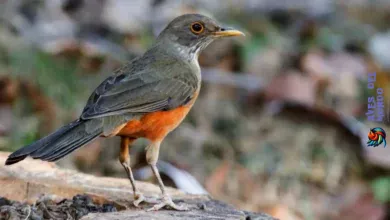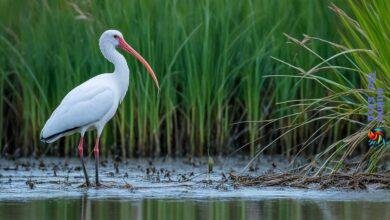Did you know that the Japanese quail starts its reproductive journey at around six weeks old? This shows the efficiency of the reproduction and life cycle of Japanese quail. In this journey into the world of Japanese quail breeding, you’ll learn about their complex quail reproductive system. It supports an intricate dance between mating behavior and caring for their young.
The vibrant acts of Japanese quail mating behavior show the depth of avian reproduction. Watching quail chick development reveals the detailed steps of their growth. This understanding shines a light on the natural instincts driving their success. It proves how nature ensures the survival of these quail, through effective quail parental care. Are you ready to explore the life story of these interesting birds? Let’s get started.
Understanding Sexual and Asexual Reproduction
Exploring quail reproduction stages shows us how important sexual reproduction is. It’s unlike asexual reproduction, which creates identical offspring from one parent. With sexual reproduction, new individuals get a mix of genetic variation in offspring. This variation is key for the survival and evolution of species like the Japanese quail, allowing them to inherit unique genes from both parents.
The Foundation of Reproductive Strategies
Choosing between sexual and asexual reproduction is a strategic decision influenced by evolution. This choice depends on what’s best for a species’ survival. While some organisms reproduce quickly through asexual means, others, like the Japanese quail, pursue genetic diversity via sexual reproduction to better adapt and thrive.
Comparative Analysis: Sexual vs. Asexual Reproduction
Asexual reproduction allows for quick population growth when conditions are stable. On the other hand, sexual reproduction enriches genetic variation in offspring. This genetic diversity is crucial for dealing with changes in the environment, highlighting the adaptability of the Japanese quail.

Implications for Offspring Survival and Genetic Diversity
The future of a species depends on its offspring’s survival. Sexual reproduction’s genetic variation in offspring boosts their chances to adapt and survive in changing environments. It arms each new generation with a wide range of traits to face various challenges.
Organisms’ Adaptations to Reproductive Modes
Evolution has shaped how organisms approach reproduction. Each method, whether sexual or asexual reproduction in organisms, plays a specific role in an organism’s survival and demonstrates how life adapts to ongoing challenges.
| Reproduction Type | Definition | Advantages | Disadvantages | Typical Organisms |
|---|---|---|---|---|
| Sexual | Fusion of gametes from two parents | Genetic diversity, adaptability | More energy and time consuming | Japanese quail, humans |
| Asexual | Reproduction from a single organism | Fast population increase, less energy required | No genetic variation, lower adaptability | Bacteria, some plants |
Reproduction and Life Cycle of Japanese Quail
For anyone interested, knowing the quail reproduction stages is key. It starts with a dance for mating, a main part of the Japanese quail reproduction period. This ensures eggs are fertile, setting the stage for quail egg incubation.
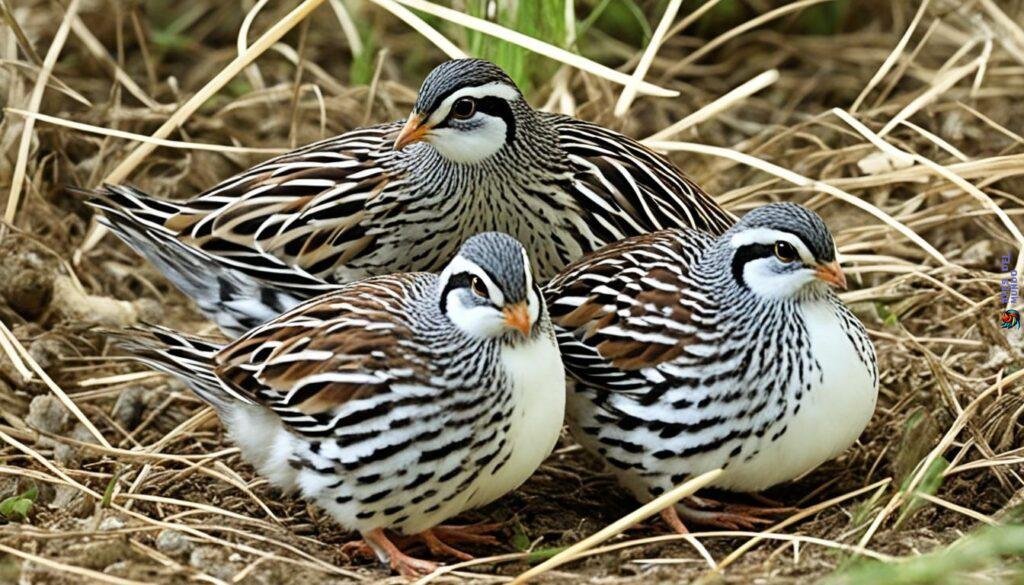
The quail egg incubation time lasts about 17 to 18 days. The right heat and moisture are crucial, kept by quail or a careful breeder. This leads to the best chance of eggs hatching.
After hatching, attention goes to quail chick development. The chicks need warmth, food, and safety. They grow and learn how to be independent in this phase.
- Beginning of life: Courtship and mating
- Nurturing the next generation: Incubation and hatching
- Ensuring the future: Chick care and development
Each life cycle step is important for survival, showing the quail’s adaptability and efficient reproduction. Exploring the world of Japanese quail reproduction reveals a complex, yet amazing cycle. It keeps these birds thriving.
The Intricacies of Japanese Quail Breeding
Starting with Japanese quail breeding shows us a complex world. These birds have unique patterns that tell us about their social order and breeding plans. It’s more than luck; it involves rituals, perfect timing, and the right conditions for breeding to happen.
Selective Mating Behaviors and Rituals
Japanese quail mating behavior is fascinating and complex. They use signals and displays to show they’re ready to mate. This way, only the strongest quails have offspring. This process helps reduce fights, make sure there is agreement, and helps quails choose the best partners. Small gestures or sounds can mean yes or no in their world.

Other important things, like how strong the eggs are or the health of the sperm, depend on their environment. Things like longer days in spring can make them start their love dances. Also, having enough good food can make the parents healthier. This means their chicks will have a better chance of surviving.
Environmental Factors Influencing Quail Breeding
To really understand environmental influences on quail breeding, you need to pay attention. The right temperature, light, and a stable place to live are key for their mating success. Even though Japanese quails can live in many places, they need certain conditions to have and raise babies.
Food is super important too. Not just for the adult quails, but for their chicks to grow up strong. Keeping an eye on these things can really help make breeding quails go smoother.
Stages of Quail Reproduction
The journey of quail reproduction shows us the toughness and complexity of bird life. This process is carefully done by nature, starting from courtship to egg-laying. It then moves to the critical step of embryonic development in quail eggs and ends with the chick breaking free. Knowing these steps is key for anyone looking to keep these birds healthy and increasing in number.
In the start, quails perform special rituals to find the right partner. This important step ensures successful mating. The rituals are a mix of actions and signals that show they’re ready to reproduce.
From Courtship to Egg-Laying: The Sequential Process
During courtship, male quails call out and show off to attract female quails. Female quails respond with their own signals to show they’re interested. After mating, the female quail picks a nesting spot. She lays one egg each day until she has a full set.
The next important step is quail egg incubation. This is where the mother quail keeps the eggs warm and moist. She does this non-stop. This care is crucial for the chicks to develop properly inside the eggs.

Analyzing Embryonic Development in Quail Eggs
Inside the egg, the chick starts to form. This stage of embryonic development in quail is amazing. It turns a fertilized egg into a baby bird. The right heat and egg turning are vital for this to happen successfully.
Understanding these reproduction stages of quail is like being part of a life cycle. It starts with courtship and ends with observing chicks grow. This cycle is full of beauty and shows the purpose of life.
Courtship and Mating Displays: The Language of Love
The process of courtship and mating shapes the Japanese quail’s life and future generations. These behavioral displays in mating go beyond instinct. They are a silent language. This language helps two quails show they are ready to be partners. We will explore how these behaviors are key to the quail reproductive system.
Evolution of Courtship Rituals
Through generations, Japanese quail mating behavior has become a complex dance. It includes subtle gestures and sounds that are vital for the species’ survival. These displays, both still and moving, have an evolutionary goal. That goal is to ensure mate recognition and maintain specific species bonds. Now, courtship is a precise process that shows health, strong genes, and breeding success.
The Role of Behavioral Displays in Attraction and Bonding
These courtship rituals are more than just steps towards reproduction. They build a bond between the pair that affects their future children’s survival. In these moments, quails are looking for a mate and a partner in raising their young. It’s a careful act. Males display by showing off their feathers, strutting, and calling. Females respond with gestures that show they accept the male, marking a successful courtship.
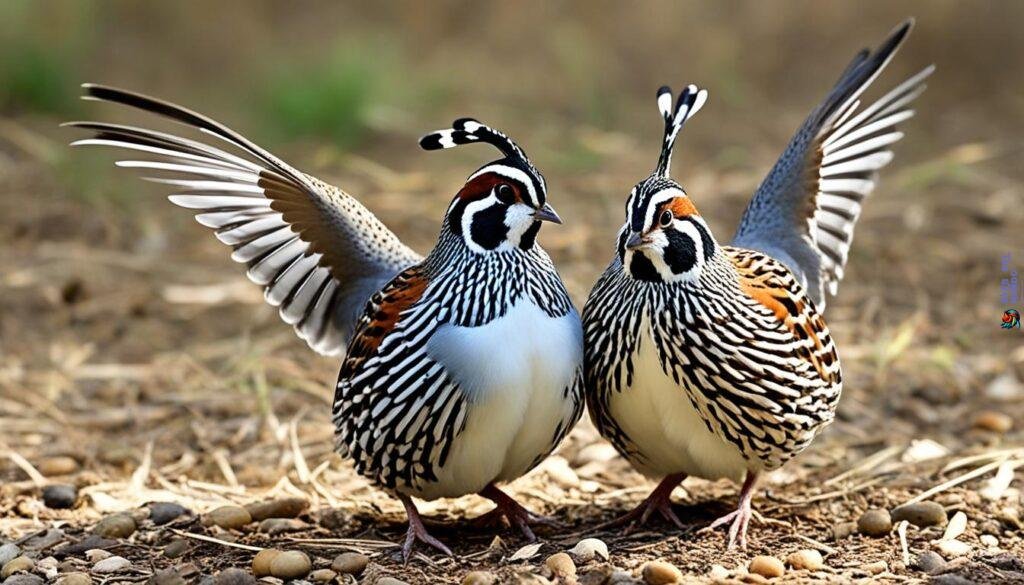
| Behavioral Display | Description | Role in Mating Process |
|---|---|---|
| Feather Flaring | Males fluff up feathers to appear larger and more dominant. | Attracts female attention and signifies male’s readiness to mate. |
| Strutting | A rhythmic, forward-moving display to showcase vigor. | Demonstrates physical health and genetics for selection. |
| Calls and Vocalizations | Distinct sounds that can vary from soft coos to loud calls. | Asserts presence and territory, facilitating partner location. |
| Accepting Posture | Females crouch and signaling receptiveness to the male. | Indicates to the male that she is ready to proceed with copulation. |
Watching these behaviors in the Japanese quail shows a respected ritual. It’s vital for both reproduction and the species’ future. The quail reproductive system relies on more than just biology. It also depends on the beautiful ways these birds show their desire and compatibility.
Key Elements of Quail Egg Incubation
Raising these birds starts with knowing quail egg incubation. It’s like a careful dance, matching embryo needs with their surroundings. Getting incubation right means keeping the temperature control just perfect. It also means knowing how hormonal impacts on incubation behavior help each quail chick start off strong.
Temperature Regulation and Incubation Period
Quail eggs hatch in about 16 to 18 days. During this time, they must stay at just the right temperature. If it’s too hot or cold, it can harm how quail chicks grow. Parent birds are really good at keeping the temp steady, so each chick develops well.
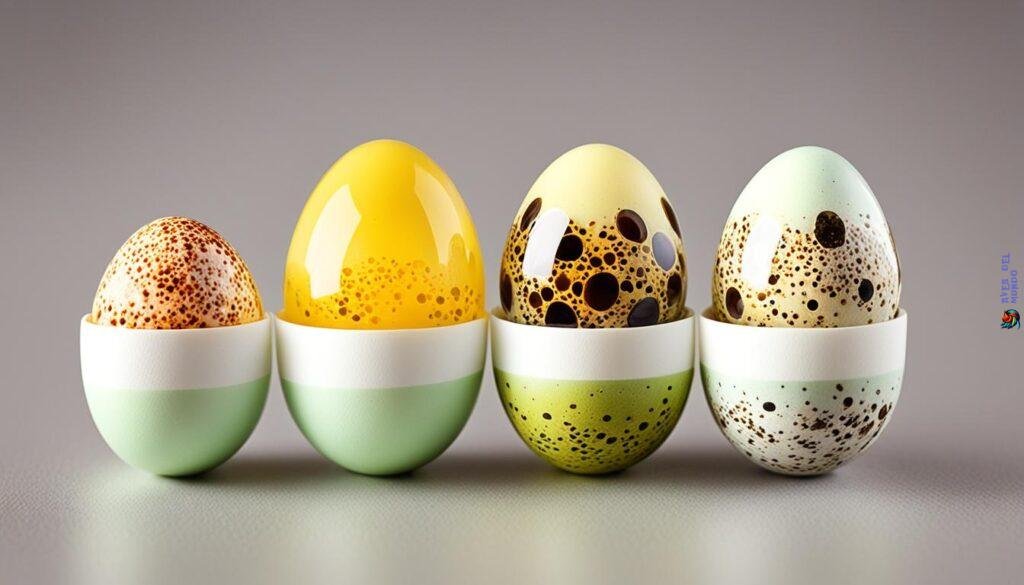
Hormonal Influences on Incubation Behaviors
During incubation, hormone levels rise, leading to important nesting behaviors. This hormonal impact on incubation behavior makes quail turn their eggs and stay close. They even grow a special patch to keep the eggs warm. Changes in hormone levels can mess up how long and well eggs incubate, showing how crucial they are.
Learning these key points helps you care for these fragile birds. Whether you’re new to bird keeping or have lots of experience, following these incubation steps shows your commitment to quail survival.
Quail Chick Development and Parental Investment
The life cycle of a quail is amazing, especially after chicks hatch. This phase is key for growth and for gaining independence. It helps us admire the journey of quail from hatching to flying.

When chicks hatch, they grow rapidly. Each step is key, showing they’re healthy and ready for life outside. Quail parents do a lot to help their chicks grow and become independent.
Growth Milestones in Early Life Stages
Early on, quail chicks get their first feathers, which keep them warm. Then, they learn to fly, a big step toward growing up and being on their own.
Parental Behaviors That Support Chick Survival
Quail parents really help their young survive. They keep them warm and safe from danger. These efforts show how much the parents do to ensure their chicks thrive.
As chicks grow, they start doing things on their own. But they still rely on what their parents taught them. Thanks to their parents, they’re ready to join the ecosystem as adults.
Deciphering Japanese Quail Mating Behavior
Exploring the world of Japanese quail mating behavior reveals nature’s complexity. It’s key for those into birds, breeding, or nature watching. We’ll look at the mate selection dynamics affecting their breeding success.
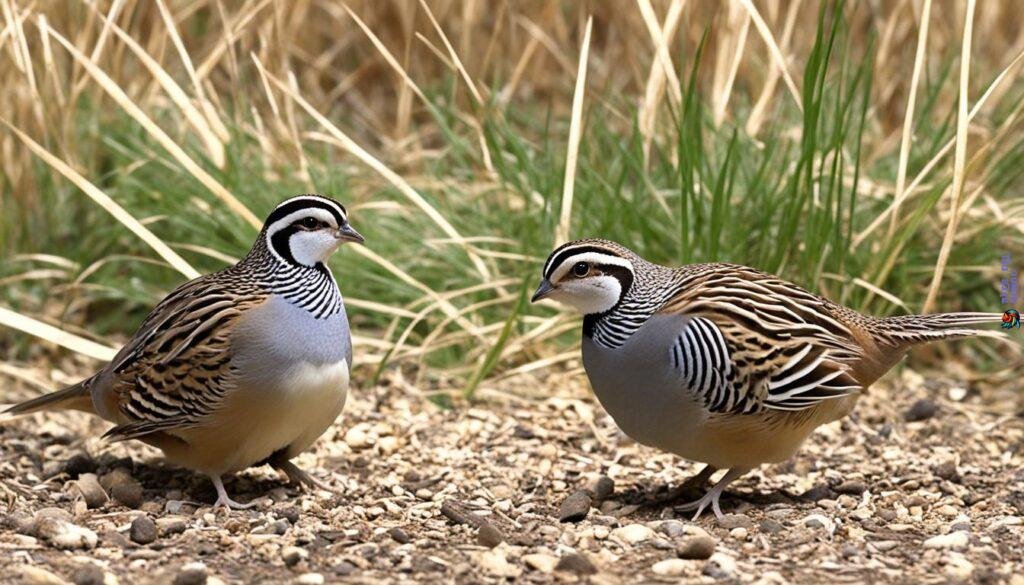
The Dynamics of Mate Selection
In Japanese quail, choosing a mate is a complex process. They pick based on health, feather quality, and behavior. This ensures their young are strong genetically.
Impact of Synchrony and Courtship on Fertilization Success
Synchronous mating rituals are essential for fertilization success. Courtship, through dances and calls, shows readiness and attraction. This timing is critical for the best egg fertilization chance.
| Behavioral Aspect | Function | Impact on Mate Selection |
|---|---|---|
| Visual Displays | Signal genetic fitness | Attracts visually responsive mates |
| Auditory Calls | Indicate presence and readiness | Influences mate choice across distances |
| Feather Condition | Reflects overall health | Used to assess the mate’s quality |
| Nest-Building Activities | Ritualization of commitment | Enhances synchronization in fertilization chances |
The details in Japanese quail interactions are crucial for breeding. Thus, Japanese quail mating behavior offers deep insights into bird reproduction.
Exploring the Quail Reproductive System
Studying reproductive success in quail requires a close look at their complex quail reproductive system. This system includes many parts that work together. They ensure the species continues. Hormones play a key part in this, controlling mating and fertility.

Different things affect quail fertility factors, from genetics to the environment. These factors help or hinder their ability to breed. We’ll look closely at how the quail’s body is built for reproduction. We will see what makes them able to have many babies.
- Hormonal Pathways: The quail’s body releases hormones that lead to mating and other key breeding activities.
- Physiological Structures: Parts of their body, like ovaries and testes, make sure healthy eggs and sperm are produced.
- Genetic Predispositions: Traits passed down through generations affect how many babies they can have and their overall health.
The quail reproductive system is designed for success in raising young ones. Knowing the main factors that help quail fertility shows us why they do well in many places. Understanding how they reproduce allows better care for them in the wild and at home.
Fertility Factors in Quail: A Complex Interaction
The reproductive success of quail involves many factors working together. There are genetic factors and environmental effects on their reproduction. To understand quail fertility, we must look at genetics, environment, and hormones.
Genetic and Environmental Influences on Quail Fertility
Quail reproduction is influenced by genetics, which affect egg quality and mating behaviors. However, the environment plays a big role too. Things like resource availability and climate changes impact reproduction.

While genetics are important, the environment can change how these genes work. For instance, a tough winter may delay breeding. A good environment, on the other hand, can lead to more chances for reproduction.
The Role of Hormones in Reproductive Success
Hormones are key in quail reproduction, acting as messengers in the body. Testosterone, estradiol, and prolactin are especially important. They affect mating success and the care of the young.
Here’s what these hormones do:
- Testosterone boosts territorial behavior and breeding readiness in males.
- Estradiol manages the reproductive cycle in females, getting the body ready for egg-laying.
- Prolactin promotes parenting behavior, helping quail look after their chicks.
The roles of these hormones are crucial. They need to be balanced for successful reproduction. Changes in hormone levels can heavily influence the chances of raising a new generation.
| Factor | Impact on Fertility |
|---|---|
| Genetic Traits | Determines inherent reproductive capabilities and offspring viability |
| Environmental Conditions | Alters the timing and frequency of breeding behaviors and success |
| Hormonal Balance | Regulates mating, incubation, and parental care behaviors |
The fertility of quail is like a complex picture made of genetics, environment, and hormones. Understanding these factors helps us with conservation and breeding, ensuring quail thrive in the future.
The Reproduction Period: Timing and Frequency
The breeding life of the Japanese quail is timed perfectly. Their Japanese quail reproduction period lines up with quail breeding cycles. This helps them have the most success in having babies.
Understanding Quail Breeding Cycles
Quail have a clear cycle for when they’re ready to breed. It’s crucial for their survival. These cycles are yearly patterns that let them know it’s time to start the reproductive phase. This is often linked to signs in their environment. Knowing these cycles helps with managing breeding.
Adaptation to Seasonal Changes and Breeding Readiness
The way quail adjust to seasons for breeding is amazing. They change their breeding times based on daylight, temperatures, and resources. This flexibility means their young have the best chance at life.

| Season | Breeding Readiness Indicators | Environmental Cues |
|---|---|---|
| Spring | Increased vocalization, courtship behavior | Rising temperatures, longer daylight hours |
| Summer | Mating and nesting behavior | Abundant food resources, stable climate |
| Fall | Decline in mating activities | Shortening daylight, temperature drop |
| Winter | Resting phase, low reproductive activity | Short days, scarce resources |
By learning how the Japanese quail reproductive period links with nature’s rhythm, we see how smart these birds are. They ensure their babies come at the best times of the year.
Hormonal Interplay During Quail Parental Care
Embarking on parenthood, Japanese quail face significant physiological changes. These are driven by an hormonal interplay in quail that is as complex as their wild behaviors. After mating ends, quail become ready to parent, led by hormonal signals. Prolactin increases to ready them for egg sitting and chick care, while corticosterone adjusts to challenges in keeping their young safe. This hormone balance is crucial for both starting reproduction and raising chicks successfully.
The dance of hormone variation in reproduction in Japanese quail is fascinating. It’s a lively process, adapting to both internal and external nest changes. Testosterone and estradiol, usually linked with aggression and mating, step aside. This lets prolactin lead, awakening the care instincts vital for quail parental care. These hormone changes are systematic. They respond to situations like egg hatching or defending young from threats, ensuring the next generation thrives.
We see how vital hormones are in this natural drama. They guide quails from one breeding step to the next, managing everything from nest warmth to feeding the chicks. Hence, the hormonal setup in breeding quails aligns their behaviors. It gets them ready in every way to take on parental duties, helping continue their family line.
